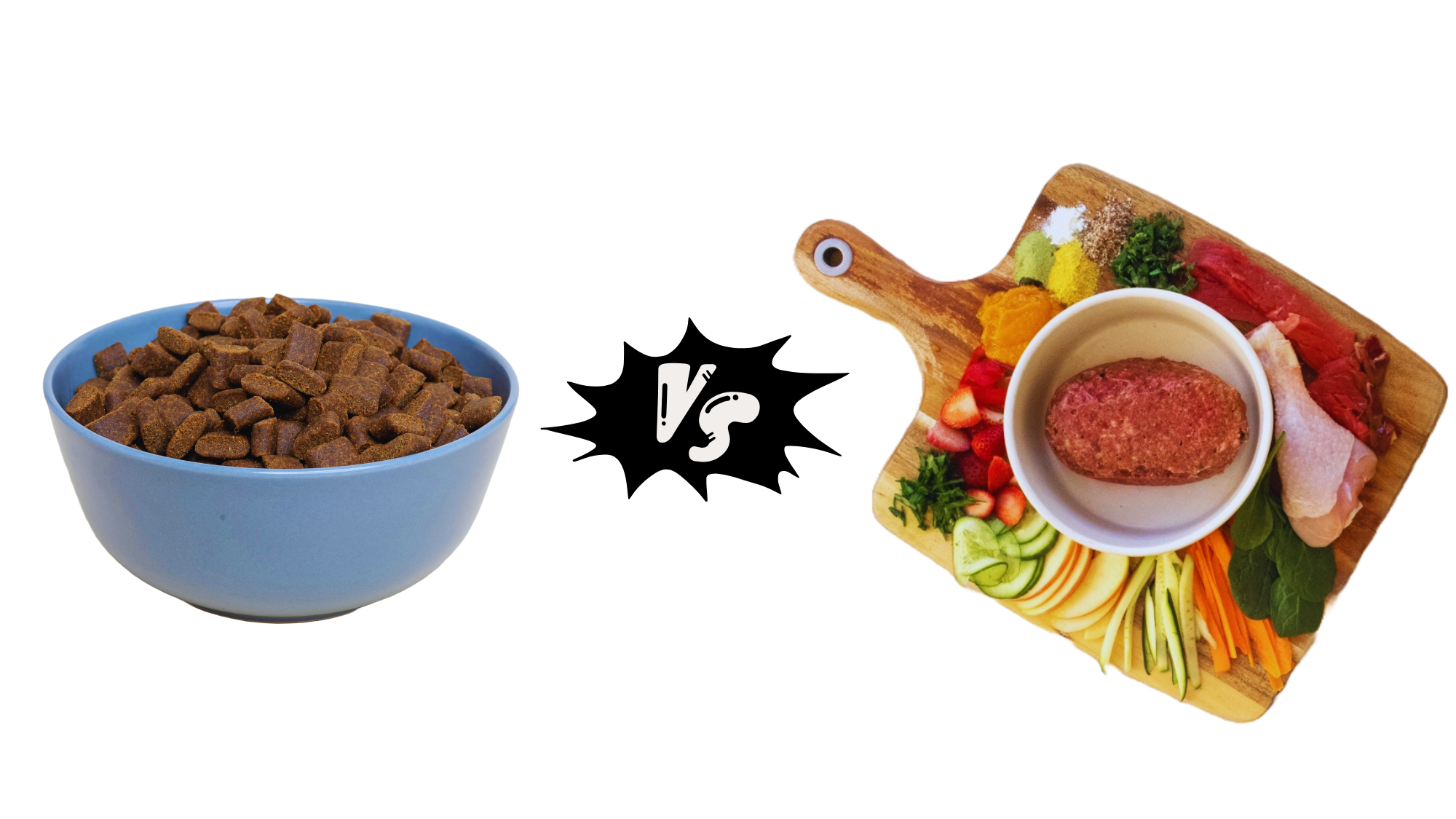| Summary: Choosing between dry dog food (kibble) and a raw diet depends on factors like nutrition, cost, and convenience. Kibble offers affordability and ease of storage, while raw food supports better digestion and coat health but requires careful handling. Both have pros and cons, so selecting the right diet depends on your dog’s needs. |
Choosing the right dry dog food vs raw diet diet for your dog is one of the most important decisions you’ll make as a pet owner. With so many options available, the debate between dry dog food (kibble) and raw feeding has been a hot topic for years. Each diet has its advocates who strongly believe their choice provides the best nutrition, health benefits, and overall well-being for dogs. To find the ideal collar size for your Australian Cattle Dog, check out this guide on What Size Collar for Australian Cattle Dog for helpful tips on measurement and fit recommendations.
Some pet owners swear by the convenience, affordability, and balanced nutrition of kibble, while others argue that a raw diet mimics a dog’s natural eating habits and promotes better digestion, skin health, and energy levels.
With both options offering unique advantages and potential risks, it’s essential to explore each in detail. In this comprehensive guide, we’ll compare nutrition, health effects, cost, convenience, and safety concerns to help you determine the best diet for your furry friend.
Blog Highlights
ToggleQuick Fix Table:
| Feature | Dry Dog Food (Kibble) | Raw Diet |
| Convenience | Easy to store & serve | Requires preparation & refrigeration |
| Nutrition | Processed, may contain fillers | Whole, natural ingredients |
| Digestion | Can cause sensitivities | Easier to digest for many dogs |
| Dental Health | May contribute to tartar buildup | Raw bones help clean teeth |
| Cost | More affordable | Can be expensive |
| Safety | Low risk of contamination | Risk of bacterial exposure |
| Shelf Life | Long-lasting | Shorter, needs freezing |
1. Understanding Dry Dog Food (Kibble)
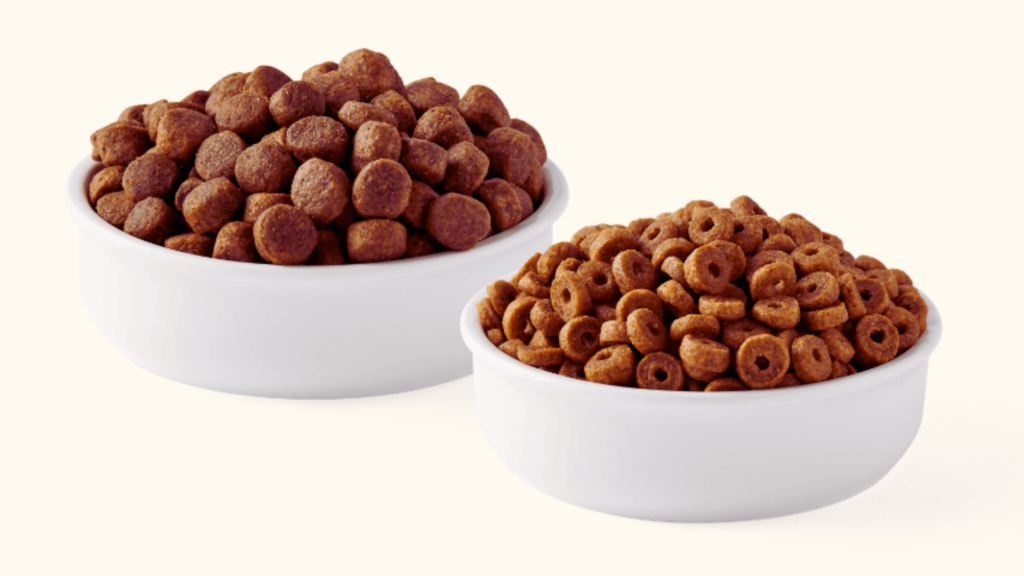
Dry dog food, commonly referred to as kibble, is one of the most popular dog food options worldwide. It is made from a mix of meat, grains, vegetables, and synthetic vitamins, which are processed and shaped into small, dry pellets. The manufacturing process typically involves high heat and pressure, which helps preserve the food for extended periods while making it easy to store and serve. Find out what color collar looks best on a Rottweiler to complement their bold appearance and highlight their unique features.
One of the main reasons pet owners prefer kibble is its convenience and affordability. Unlike fresh or raw food, kibble does not require refrigeration and has a long shelf life, making it an easy, hassle-free option for feeding dogs daily. Additionally, many brands fortify kibble with added vitamins and minerals to ensure dogs receive a well-balanced diet without the need for supplementation.
However, despite its convenience, kibble has some drawbacks. Many commercial kibble brands contain fillers, preservatives, and artificial additives, which may not be ideal for a dog’s long-term health. Ingredients like corn, wheat, and soy are often used as cheap fillers, leading to potential digestive issues, allergies, and weight gain in some dogs. Lower-quality kibble may also contain meat by-products and rendered fats, which provide less nutritional value compared to whole, fresh ingredients.
For pet owners seeking a more natural and wholesome diet, high-quality kibble options made with real meat, limited fillers, and minimal processing are available. While these options tend to be more expensive, they provide better nutrition and fewer artificial additives, making them a healthier choice for dogs that rely on dry food as their primary diet.
2. Understanding the Raw Diet
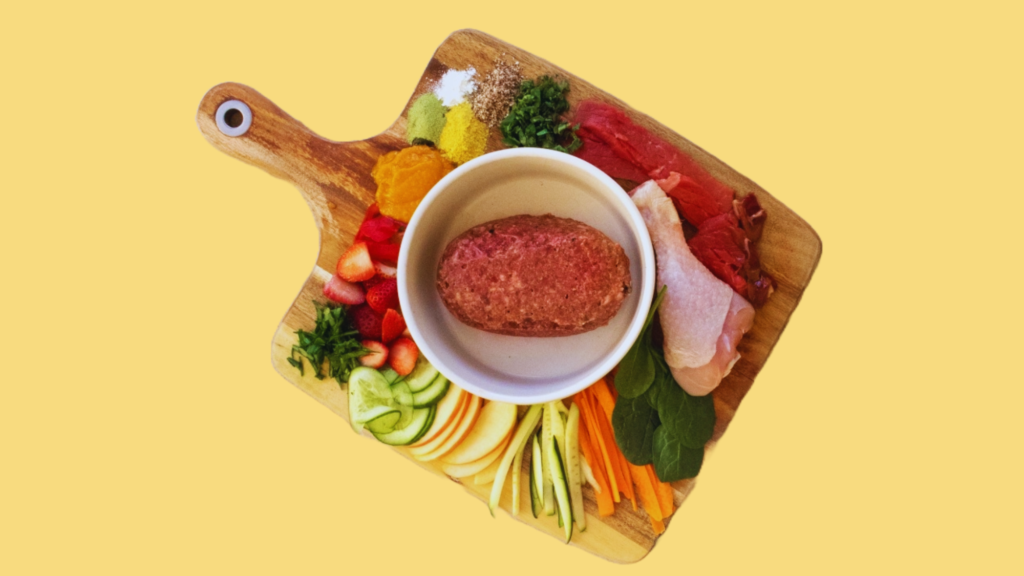
A raw diet, often referred to as the BARF (Biologically Appropriate Raw Food) diet, consists of uncooked meats, raw bones, organ meats, and sometimes fruits and vegetables. The goal of this diet is to mimic the natural diet of wild canines, providing dogs with whole, unprocessed foods that align with their evolutionary needs. Learn what size collar for a Rottweiler is ideal by following this detailed guide to ensure a perfect fit for your dog’s comfort and safety.
Raw diets typically include a mix of muscle meat, raw meaty bones, liver, kidney, heart, eggs, and even fish to ensure dogs receive essential nutrients. Some owners also add supplements like fish oil, probiotics, and ground eggshells to ensure their dog gets enough calcium and omega-3 fatty acids. The proponents of raw feeding argue that uncooked, natural foods provide higher-quality protein, better digestion, and overall improved health compared to processed kibble.
Despite the many potential benefits, raw feeding comes with challenges. One major concern is bacterial contamination, as raw meat can carry pathogens such as Salmonella and E. coli. If raw food is not handled and stored properly, it can pose health risks to both pets and their owners. Additionally, nutritional imbalances can occur if meals are not carefully planned. Unlike commercial dog food, which is formulated to meet dietary requirements, raw diets require careful portioning to avoid deficiencies in essential vitamins and minerals.
Many pet owners who switch to raw feeding report improvements in their dog’s coat quality, digestion, energy levels, and dental health. However, it requires time, effort, and financial commitment to ensure dogs receive a properly balanced diet. Some owners opt for commercially prepared raw food diets to reduce the risks of contamination and nutritional gaps while still providing the benefits of raw feeding.
3. Nutritional Differences: Dry Dog Food vs Raw Diet
Protein Content & Quality
Protein is one of the most crucial nutrients for dogs, as it supports muscle growth, immune function, and overall health. Raw diets provide high-quality, unprocessed protein sourced from fresh meats, making it more bioavailable for a dog’s body to absorb and utilize efficiently. Because raw diets contain whole muscle meats, organs, and bones, dogs get natural amino acids, collagen, and other vital nutrients directly from their food.
In contrast, kibble often contains meat meals and by-products, which are highly processed and may be less digestible. While premium kibble brands use real, whole meats as their primary ingredient, lower-quality options often rely on plant-based proteins such as soy and pea protein, which may not provide the same nutritional benefits. Dogs thrive on animal-based proteins, making the quality of protein in their diet a significant factor in overall health.
Carbohydrates & Fillers
Most kibble contains 30-60% carbohydrates, as grains, legumes, and potatoes are used as fillers and binders to create the kibble texture. While carbohydrates provide energy, dogs have no biological requirement for high-carb diets. Excessive carbohydrate intake can lead to weight gain, insulin resistance, and increased inflammation, particularly in less active dogs.
Raw diets, on the other hand, are naturally low in carbohydrates, with most calories coming from high-quality proteins and healthy fats. This aligns with a dog’s ancestral diet, as wild canines consume mostly protein, fats, and minimal plant matter. A diet lower in carbohydrates may also help prevent obesity, diabetes, and food-related allergies. You can learn whether Dachshunds need special collars and find expert recommendations in this article: Do Dachshunds Need Special Collars.
Moisture Content
One major advantage of raw food is its high moisture content, which contributes to better digestion and hydration. Raw diets contain 60-80% moisture, which supports kidney function and prevents dehydration. Dogs that eat raw food typically drink less water because their food naturally provides adequate hydration.
Conversely, kibble is extremely dry, containing only 10% moisture. This lack of moisture forces dogs to drink more water to stay hydrated. Over time, dehydration from eating dry food exclusively may contribute to kidney problems and urinary tract issues, especially in older dogs.
4. Health Benefits: Kibble vs. Raw Diet
Dental Health
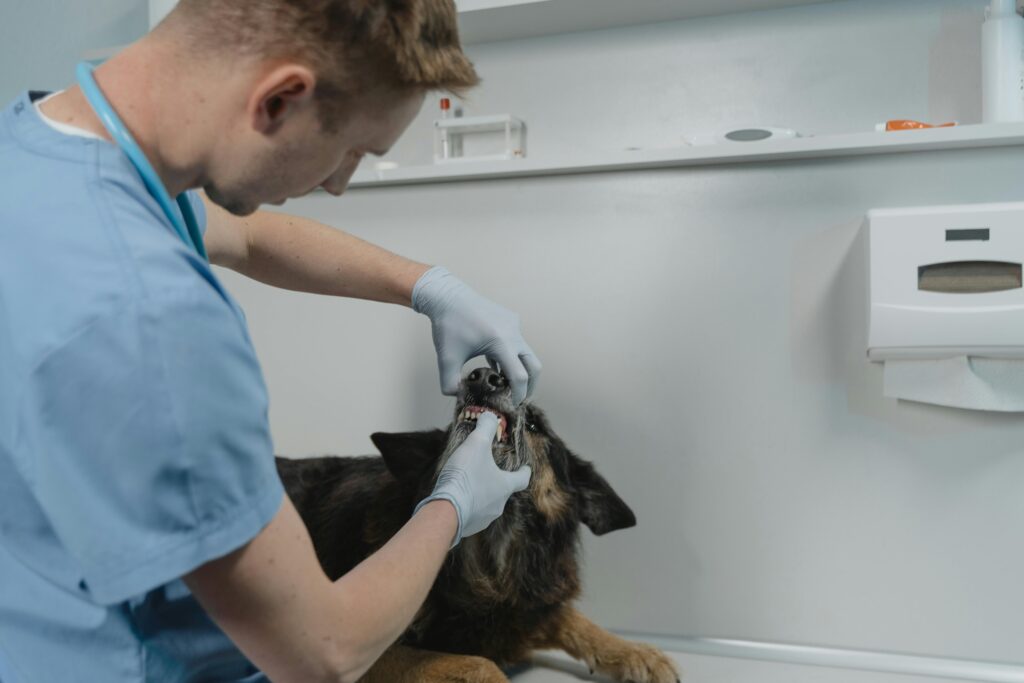
Proponents of kibble claim that the crunchy texture helps scrape plaque off teeth, but many dogs still develop tartar buildup and gum disease on a kibble-based diet. Kibble particles often get stuck between teeth, leading to bad breath and bacterial growth over time.
A raw diet, particularly one that includes raw meaty bones, naturally helps keep a dog’s teeth clean. Chewing on raw bones acts as a natural toothbrush, removing plaque and massaging the gums, which helps prevent dental disease. Dogs fed raw diets typically have fresher breath, stronger gums, and healthier teeth than those fed kibble.
Digestive Health
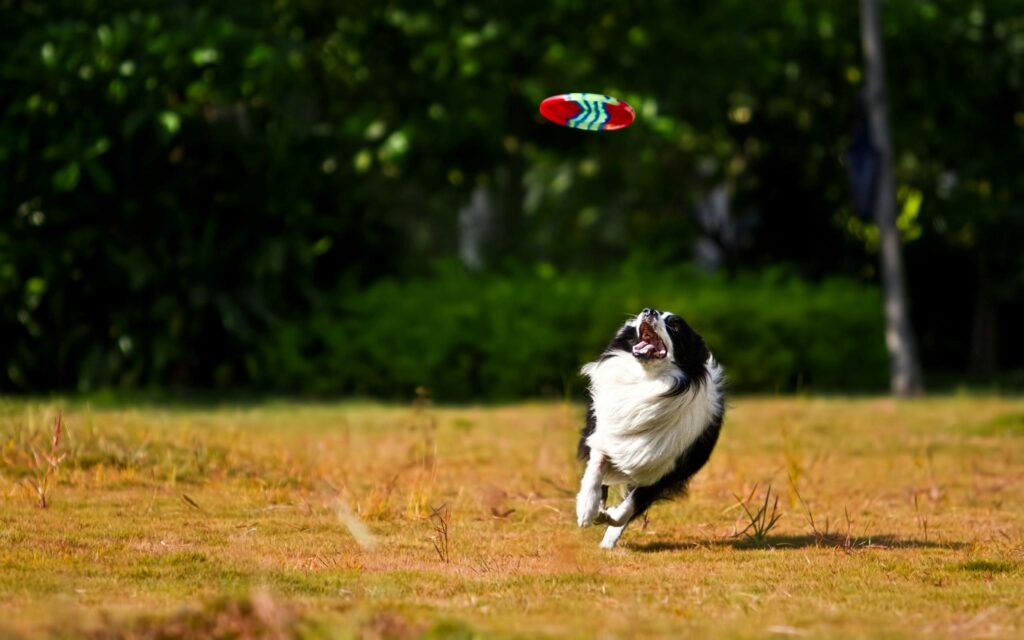
Kibble is often harder to digest due to the presence of fillers, artificial preservatives, and complex carbohydrates. Many dogs on kibble experience larger, smellier stools, bloating, and digestive discomfort, particularly if they have sensitivities to grains or artificial ingredients.
Raw food, being highly digestible, results in smaller, firmer stools due to its natural composition. Many owners notice less gas, improved stool quality, and fewer digestive issues when switching their dogs to a raw diet. The absence of artificial additives and excess carbohydrates allows dogs to process food more efficiently.
5. Safety Concerns: Is One Diet Riskier Than the Other?
One of the biggest concerns regarding raw feeding is the risk of bacterial contamination. Raw meat can carry Salmonella, E. coli, and Listeria, which may pose health risks to both dogs and their owners. If raw food is not handled, stored, or prepared properly, these pathogens can spread through a dog’s saliva, feces, or direct contact with humans, leading to potential infections. This is especially concerning in households with young children, elderly individuals, or immunocompromised family members who are more vulnerable to bacterial exposure.
However, dogs have strong stomach acids and shorter digestive tracts, which help them handle bacteria better than humans. Many raw feeders argue that the risk of contamination is minimal when food is sourced responsibly and handled hygienically. To decide whether a collar or harness is best for your Dachshund, check out this helpful guide: What is Best for Dachshund Collar or Harness.
Using human-grade raw meats, freezing food to kill parasites, and cleaning food prep areas properly can significantly reduce risks. Some owners opt for commercially prepared raw diets, which undergo high-pressure processing (HPP) to eliminate harmful bacteria while retaining the benefits of raw feeding.
On the other hand, kibble is generally considered safer and more convenient, as it undergoes high-temperature processing to eliminate bacteria. However, even dry dog food has its own safety risks. Over the years, there have been numerous recalls of kibble brands due to Salmonella contamination, mold growth, and the presence of harmful mycotoxins from grains stored improperly. Additionally, some kibble brands contain synthetic preservatives like BHA and BHT, which have been linked to health concerns in long-term consumption.
Ultimately, both diets come with safety considerations, but proper handling and storage practices can minimize risks. If safety is a primary concern, a high-quality kibble or a pre-packaged raw food brand with pathogen control measures may offer the best balance of nutrition and safety.
6. Cost Comparison: Which Diet is More Affordable?
The cost of feeding a dog varies significantly depending on the dog’s size, brand selection, and dietary preferences. Kibble is generally the more budget-friendly option, especially when purchasing in bulk. Affordable kibble brands are widely available, with prices ranging from $20 to $80 per month depending on the quality of the ingredients and the dog’s size.
However, premium kibble brands that use higher-quality meats, fewer fillers, and added probiotics can be much more expensive. Owners who opt for grain-free, organic, or specialty kibbles may spend as much as $100 to $150 per month, particularly for large-breed dogs. While this is still more affordable than raw feeding, the quality difference between budget and premium kibble is substantial, making it worth investing in higher-quality options if possible.
In contrast, a raw diet can be significantly more expensive than kibble, especially if using human-grade meats, organic ingredients, and pre-made raw meals. On average, raw feeding costs $100 to $300 per month, depending on portion sizes and ingredient sources. Some owners save money by buying meats in bulk, sourcing directly from butchers, or using local farm suppliers. Others prefer commercial raw dog food brands, which offer balanced meals but at a higher price point. Discover the best collars for Siberian Huskies for both style and comfort.
While raw feeding tends to cost more upfront, some owners argue that it reduces veterinary expenses in the long run by preventing health issues like obesity, allergies, and digestive disorders. A well-balanced diet can contribute to fewer trips to the vet, lower medication costs, and improved long-term health. That being said, affordability remains a major deciding factor for many dog owners, making kibble the more practical choice for those on a budget.
7. Which Diet is Best for Your Dog’s Lifestyle?
Choosing between kibble and a raw diet depends on your dog’s lifestyle, activity level, and individual health needs. Active dogs, working breeds, and performance canines often benefit from higher protein and fat intake, making raw feeding a better option for maintaining muscle mass, endurance, and energy levels. Dogs that engage in sports, agility training, or herding work may thrive on a raw diet rich in essential nutrients to fuel their demanding lifestyles.

However, for busy households, frequent travelers, or multi-dog homes, kibble offers unmatched convenience and ease of feeding. Owners with unpredictable schedules may find it difficult to prepare raw meals daily, making kibble a more practical choice for ensuring dogs receive regular, balanced nutrition without the extra preparation time. Additionally, some boarding facilities, pet sitters, and daycare centers do not accept raw-fed dogs, making kibble the easier option for pet owners who travel often.
Certain health conditions also play a role in dietary decisions. Dogs with allergies, chronic skin conditions, or digestive sensitivities may experience improvements on a raw diet, as it eliminates many common allergens found in kibble, such as grains, soy, and artificial preservatives. Conversely, dogs with weakened immune systems, pancreatitis, or kidney disease may require carefully controlled diets, which can sometimes be easier to manage with veterinary-approved kibble formulas.
Ultimately, the best diet depends on your dog’s individual needs, lifestyle, and your ability to maintain a consistent, well-balanced feeding routine. Whether you choose kibble, raw feeding, or a combination of both, prioritizing high-quality ingredients and proper nutrition is key to keeping your dog happy and healthy.
Final Verdict: Which Diet is Better?
Both dry dog food vs raw diet have pros and cons, and the best choice depends on your dog’s needs, lifestyle, and your ability to provide a balanced diet. If convenience and affordability are your priorities, high-quality kibble can still provide good nutrition. However, if you want to replicate a dog’s natural diet, support better digestion, and improve overall health, a well-balanced raw diet may be the superior option.
Whichever diet you choose, ensuring your dog receives high-quality ingredients and a well-rounded nutrient profile is key to a healthy, happy life. Would you consider switching your dog’s diet? Let us know your thoughts! Learn how to put a collar on a Husky with these practical tips.

